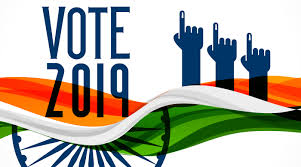Bottom Line on Top (BLOT): I am against Mr. Murthy's missive that people should work for 70 hours or more to be productive. People can stop reading here. The rest of the narrative just explains my thought process. If interested, read on!
Background: The legendary Mr. Narayan Murthy - one of the founders and Chairman Emeritus of Infosys created a debate in the white collar professional world by stating that people should not think twice even they have to work 70 hours a week. He also mentioned that the young people today are lazy and India's productivity has gone down. Predictably, it created a huge uproar with folks coming out in support of and against Mr. Murthy in equal measure. Known personalities supported Mr. Murthy by quoting examples of Sachin Tendulkar, Virat Kohli, Amitabh Bachchan and how they created their position by working hard and not just for 8 hours a day. I agree. You can't be the GOAT without a great deal of sacrifice.
My Perspective: Let me first start by saying that I myself have worked for 80 hours or more with my previous company. Not for a month or two, but for 3-4 years at end. While I progressed professionally, I ended up moving out of that organization. So you can imagine how that ended. And it also hurt me personally. I missed a lot of events in my children's lives and my wife was left raise our children as a single parent which is not a good experience for anybody.
When I look back at those years, I ask myself, for whom did I work this hard and sacrificed what I did? What did I get in return for my sacrifices? Yes, I was promoted and my salary increased, but honestly was I compensated commensurate with the effort I put in? I was working for a global corporation who made impressive profits. All I got was 2-3% annual raise and a capped bonus. Sometimes not even that and we got maybe 70 cents on the dollar instead of the expected bonus.
As opposed to the majority of the workforce, Mr Murthy was working for himself after he quit his job and started Infosys with Rs. 10000. So he had everything to lose and couldn't afford to fail. Ironically, it was the same Mr. Murthy who had emailed all the Infosys staff to leave office at 5 pm and ensure that there is work-life balance. So you have to wonder what changed Mr. Murthy's opinion. Mr. Murthy's sage advice is spot on for entrepreneurs and startup employees who have a skin in the game in terms of equity as they stand to gain big if the startup turns out to be one of the rare unicorns that we hope. The average employee has no incentive to work for more than what they get paid. They have fixed salaries, the promotions are hard to come by, career prospects are bleak among other reasons. Yes, they also can work for themselves by picking up some freelance work, but companies put a clause in the employment contract and prohibit employees from doing independent work to safeguard proprietary information. They even put a no-compete clause in the contract. And wasn't it Mr. Murthy himself who spoke out against freelancing when the top leaders of the companies effectively do the same when they sit on the boards of various companies?
Conclusion: To be clear, I greatly respect Mr. Murthy and I believe he is one of the greatest minds India has ever produced. But that doesn't necessarily mean we all agree with all his views. This is just one small dissenting voice in the myriad of others. Finally I am happy to work extended hours when there is a need. But it cannot be standard operating environment.
Disclaimer: These are my own personal views and it does not represent views of my current or former employers, colleagues or even friends. If you disagree with me, I am OK with it.

